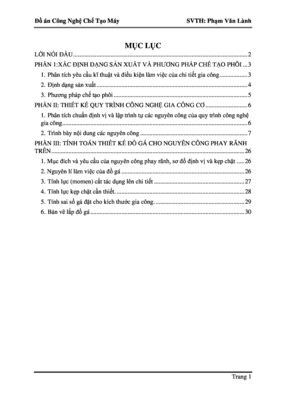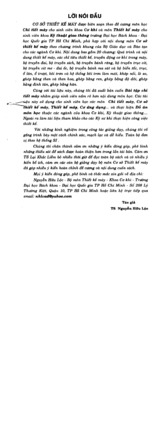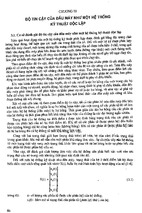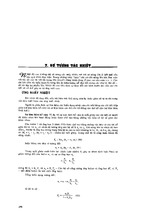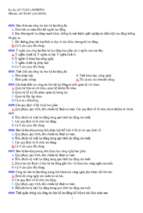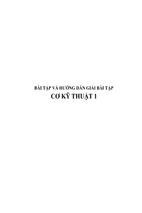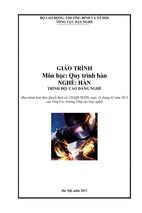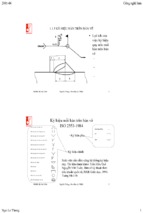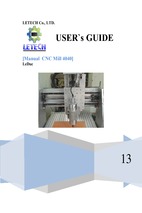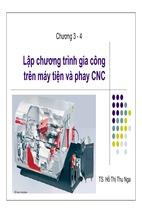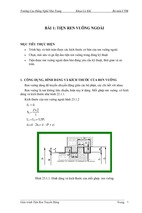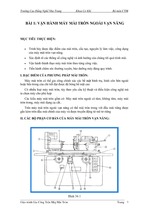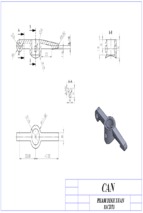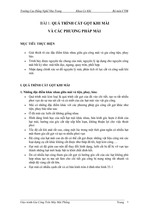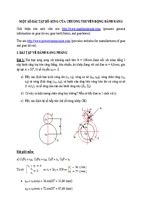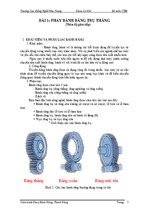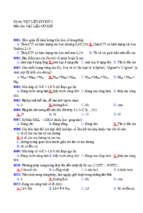Hot Runners
in Injection
Moulds
Daniel Frenkler and Henryk Zawistowski
English Translation by Robert Walkden
Hot Runners in
Injection Moulds
Daniel Frenkler and Henryk Zawistowski
English translation by Robert Walkden
Rapra Technology Limited
Shawbury, Shrewsbury, Shropshire SY4 4NR, United Kingdom
Telephone: +44 (0)1939 250383 Fax: +44 (0)1939 251118
http://www.rapra.net
First Published in English in 2001 by
Rapra Technology Limited
Shawbury, Shrewsbury, Shropshire, SY4 4NR, UK
©2001, Rapra Technology Limited
The right of Daniel Frenkler and Henryk Zawistowski to be recognised as authors of this
Work has been asserted by them in accordance with sections 77 and 78 of the
Copyright, Designs and Patents Act 1998.
All rights reserved. Except as permitted under current legislation no part
of this publication may be photocopied, reproduced or distributed in any
form or by any means or stored in a database or retrieval system, without
the prior permission from the copyright holder.
A catalogue record for this book is available from the British Library.
ISBN: 1-85957-208-1
Typeset by Rapra Technology Limited
Printed and bound by Redwood Books, Trowbridge, Wiltshire
Contents
Preface ................................................................................................................... 1
Introduction .......................................................................................................... 3
1 Types of Hot Runner Systems .......................................................................... 7
1.1 Melt supply methods ................................................................................ 9
1.2 Methods of heating ................................................................................. 13
References ...................................................................................................... 19
2 Conditions for use of Hot Runners ................................................................ 21
2.1 Technical advantages and limitations of using HR ................................. 21
2.2 Initial grounds for introduction of an HR system ................................... 23
2.3 Comparative cost analysis ...................................................................... 29
References ...................................................................................................... 36
3 Links with Technology ................................................................................... 37
3.1 Impact of properties of plastics on HR system design ............................. 37
3.1.1 General impact of composition and structure of plastics ............. 37
3.1.2 Temperature window ................................................................... 41
3.1.3 Properties of plastics in a liquid state .......................................... 47
3.1.4 Interaction between plastics in fluid state and HR components ... 61
3.2 Impact of HR on product quality ........................................................... 62
3.2.1 Shaping of internal features of product in mould ........................ 62
3.2.2 Shrinkage of moulded parts ......................................................... 65
3.3 Mould requirements when an HR system is used ................................... 67
i
Hot Runners in Injection Moulds
3.4 Interaction between HR moulds and injection moulding machine .......... 69
References ...................................................................................................... 71
4 Structure of a Hot Runner System.................................................................. 73
4.1 HR nozzles ............................................................................................. 75
4.1.1 Gates ........................................................................................... 84
4.1.2 Open nozzles ............................................................................... 93
4.1.3 Tip nozzles ................................................................................ 102
4.1.4 Shut-off nozzles ......................................................................... 117
4.1.5 Edge nozzles .............................................................................. 131
4.1.6 Nozzle heating ........................................................................... 138
4.2 HR manifolds ....................................................................................... 146
4.2.1 Manifold with external heating ................................................. 148
4.2.1.1 Manifold design ............................................................ 148
4.2.1.2 Fastening and sealing of manifolds ............................... 166
4.2.1.3 Sprue bushings .............................................................. 175
4.2.1.4 Manifold heating and insulation ................................... 178
4.2.1.5 Manifold housings ........................................................ 182
4.2.2 Manifolds with internal heating ................................................ 183
4.2.2.1 Manifold design ............................................................ 184
4.2.2.2 Nozzle installation ........................................................ 189
4.2.2.3 Sprue bushings .............................................................. 191
4.3 Enclosed HR sets .................................................................................. 192
4.4 Moulds with insulated channel ............................................................. 194
4.5 Thermal expansion of HR sets.............................................................. 196
References .................................................................................................... 202
5 Thermal Balance and Temperature Control ................................................. 205
5.1 Heaters and thermocouples .................................................................. 205
5.2 Heating zones ....................................................................................... 217
ii
Contents
5.3 Heat losses ............................................................................................ 221
5.4 Power consumption .............................................................................. 224
5.5 Temperature regulators ......................................................................... 228
References .................................................................................................... 235
6 Filling Balance .............................................................................................. 237
6.1 Natural balance .................................................................................... 239
6.2 Rheological balance .............................................................................. 241
References .................................................................................................... 252
7 Choosing an HR System .............................................................................. 253
7.1 Definition of HR system ....................................................................... 254
7.1.1 Type of system ........................................................................... 254
7.1.2 Heating method ......................................................................... 256
7.1.3 Heating voltage ......................................................................... 256
7.1.4 Degree of expansion .................................................................. 257
7.1.5 The melt supply method ............................................................ 257
7.2 Channel and gate selection ................................................................... 263
8 Special Injection Processes Using HR ........................................................... 273
8.1 Sequential and cascade moulding ......................................................... 273
8.2 Moulding with decorative films ............................................................ 276
8.3 Moulding with textile linings ................................................................ 279
8.4 Multi-component moulding .................................................................. 282
8.5 Injection of high-temperature group plastics ......................................... 285
8.6 Thermoplastic elastomer moulding ....................................................... 286
References .................................................................................................... 287
9 Special HR Mould Designs .......................................................................... 289
iii
Hot Runners in Injection Moulds
9.1 HR in moulds for large pieces .............................................................. 289
9.2 HR in moulds for small mouldings ....................................................... 296
9.3 HR in moulds for thin-walled tubular mouldings ................................. 297
9.4 HR in stack moulds .............................................................................. 299
9.5 Moulds with HR in long cores ............................................................. 306
9.6 Moulds with HR for moulding without a weld line .............................. 308
9.7 Non-standard methods of melt distribution in HR moulds .................. 311
9.8 Modular units for moulds with HR nozzles .......................................... 314
References .................................................................................................... 315
10 Use of Moulds with HR ............................................................................... 317
10.1 Mould acceptance ............................................................................... 317
10.2 Preparation of a mould for operation ................................................. 319
10.3 Ongoing servicing ............................................................................... 321
10.4 Maintenance and storage .................................................................... 325
10.5 Work safety principles ........................................................................ 326
References .................................................................................................... 326
11 Disruptions to the Operation of HR Moulds and Typical Moulding Defects . 327
11.1 Leaking in HR systems ....................................................................... 327
11.2 Shut-off nozzle leaves vestige .............................................................. 328
11.3 Gate blocked ....................................................................................... 329
11.4 Gate stringing or drooling .................................................................. 329
11.5 Incomplete mouldings ......................................................................... 329
11.6 Sinks ................................................................................................... 330
11.7 Brown or silver streaks (burn) ............................................................ 330
iv
Contents
11.8 Delamination ....................................................................................... 332
References .................................................................................................... 332
12 The Way Ahead for HR Technology ............................................................ 333
Abbreviations and Acronyms............................................................................. 335
Appendix 1 - List of Hot Runner Suppliers ....................................................... 339
Index ................................................................................................................. 343
v
Hot Runners in Injection Moulds
vi
Preface
The technology of hot runners in injection moulds for plastics is becoming more and
more widely used, and this has been accompanied by an increase in the range of hot
runner systems available. This development has meant that in manufacturing practice,
the user of hot runner moulds is faced with the problem of how to make an objective
comparison between the systems on offer from the technical information at his disposal
– company catalogues and brochures. The large range of hot runner systems on the
market and the complex link between their design and the result obtained in practice
means that many designers and users have difficulty in making the best choice. Besides
economic and technical considerations, this choice must also take into account the specific
properties of the plastics. An understanding of the physical processes taking place in the
mould during injection forms a basis for informed building and optimum selection of the
hot runner system, and for its subsequent operation. This is an aspect to which the book
gives special attention.
In the meagre selection of works on the subject of the design of injection moulds,
comparatively little space is devoted to hot runner systems. There is only one book
exclusively addressing this subject, and that was published in 1960 [E. Moslo, Runnerless
Moulding, Reinhold Publishing Corporation, 1960].
The aim of this manual is to fill that gap. It introduces a logical division of hot runner
systems, illustrates the design of nozzles, manifolds and other system components,
discusses the principles of selection, building, installation and use, analyses the causes of
faults and suggests ways of eliminating them, and presents examples of applications. In
researching this book, we made use of information that is available in the technical
literature and that was provided by hot runner system manufacturers and users. With
our own experience to guide us, we have tried to be objective without making evaluations
of individual systems produced by specific companies.
Writing a book takes a certain time, and the rapid development of hot runners has meant
that by the time the book was ready for publication, some nozzle types had already been
replaced by later versions. The book cannot, however, be a substitute for a company’s
catalogue, and the very latest illustrations are not essential for explanatory purposes.
We would like to thank all those who have assisted us, and especially the manufacturers
of standard hot runner systems who made their graphic material available to us. Readers
1
Hot Runners in Injection Moulds
will find a list of these manufacturers in Appendix 1. Special thanks also to Robert
Walkden who performed the difficult task of translation from the Polish, and to the staff
of Rapra Technology, particularly Claire Griffiths, Steve Barnfield, Sandra Hall and
Frances Powers, who all worked on the editorial aspects of the English translation. Thanks
also to Clive Broadbent of Fast Heat International (UK) Ltd., who kindly proof read the
final version of this book.
Daniel Frenkler, Henryk Zawistowski
Nynashämn, (Sweden), Warsaw, (Poland), July 2000
Note: all the measurements in the figures are in mm.
2
Introduction
Hot runners (referred to from here on as HR) constitute a technique that has been used in
thermoplastics injection moulds for over 30 years now. There are some 60 manufacturers
in the market supplying their own HR systems. Use of HR is constantly increasing, and it
is estimated that HR technology is currently used in every fourth mould made in Europe,
and in every sixth made in the United States, with forecasts showing a further increase in
use with similar proportions being maintained (Figure A). The basic HR principle was
patented in the USA as long ago as 1940 [1]. Despite the time that has passed since then,
the technique has not altered, and today’s HR developments differ little from the idea that
lies behind the prototype (Figure B). One of the first HR moulds in Poland was designed
from reports in the trade literature (BASF) and manufactured at the PLASTIC company in
1965 (Figure C). The technique developed slowly at first, and interest was limited, especially
as hot runner systems were designed and built on an individual basis at that time. It was
not until the oil crisis of 1973 that the economic conditions combined to favour rapid
development of HR. When raw material prices were rising from week to week, processors
were forced into radical material cost reductions. One way of achieving this was through
use of HR systems, which eliminated waste in sprue form. Manufacturers of HR nozzles,
and later of full HR systems, appeared in the market. The sudden rise in demand for HR
USA
EUROPE
USA
EUROPE
USA
EUROPE
Figure A Percentage use of HR in injection moulds
(data from EWIKON Heißkanalsysteme)
3
Hot Runners in Injection Moulds
Figure B HR mould designed, built and patented by E.R. Knowles (USA) in 1940 [1]
Figure C HR mould design for a PE box
(PLASTIC, Warsaw, designed by Henryk Zawistowski, 1965)
4
Introduction
systems did, however, have a negative effect - manufacturers had not the time to upgrade
systems; HR nozzles were vulnerable to blockage, not properly adapted to the properties
of the plastic, temperature controllers lacked sensitivity, and there was no such thing as an
automatic heating start function. This caused disillusionment with HR technology and a
fall in demand. The period of stagnation, however, brought about an increase in outlay on
technical and quality development, with the result that HR systems of the last decade may
now be regarded as technically mature developments. There is such a large range of HR
systems on the market nowadays that efficient systems can be selected for most applications
and virtually all thermoplastics. The wide variety of designs is partly a consequence of the
continuous development of HR technology, but also arises from the patent situation, which
restricts the freedom of dissemination of optimal designs.
Sensibly applied HR technology has a number of advantages. Chief among these are
reductions in raw material consumption and easier automation of the injection process.
In many cases greater production output is achieved by shortening the injection cycle, or
other technical benefits are attained. The design of some types of moulds has been
simplified. Injection of certain products, particularly of large size, would be difficult or
downright impossible without HR technology. It was only the introduction of HR moulds
that made the production of cheap disposable items a possibility. HR technology enables
production costs in large series to be reduced. One fundamental pre-condition, however,
is correct selection of the HR system; if this is not done, the effect may be the reverse of
that desired. The negative attitude of some processors to HR technology may owe its
origins to bad experiences caused by arbitrary nozzle selection, choice of cheap nozzles
at the expense of durability and optimum functioning, use of home-made nozzles, unskilled
operation, lack of qualifications and especially lack of familiarity with the physical
processes taking place during plastics processing, lack of a suitably drawn up cost balance,
and also by the lower capabilities of early HR systems. HR system manufacturers are
aware of this, and attribute considerable significance at the present time to informing the
user of the importance of choosing the right HR system and running it properly, and
they take an active part in finding the best solution, often actually taking upon themselves
the responsibility for system selection.
There is no such thing as an HR system that would be ideal for all materials and all types
of product. Thermoplastics have a very wide range of rheological and thermal properties.
This means that a specific HR system that is right for a particular thermoplastic or group
of thermoplastics will function less well, or not at all, for another group of such plastics.
The operation of the system further depends on such factors as the shot volume and
injection speed, the flow length, the shape of the mould cavity and the need to change the
colour of the plastic. There are certain restrictions applicable to thermally sensitive plastics
and plastics vulnerable to shear, and to plastics with flame-retardant additives, fillers
and reinforcing agents.
5
Hot Runners in Injection Moulds
Warning! An HR system is individually selected for each specific instance: a particular
moulding, a particular plastic and particular production conditions!
HR technology may be employed for special injection methods, like in-mould, i.e.,
lamination of inserts made of film and textile liners, injection of foam plastics, multicomponent injection, inert-gas-assisted injection, etc.
It should be remembered, however, that no system is better than its own weakest link.
The best nozzle will let you down if it is controlled by a primitive ON/OFF regulator that
does not keep the temperature within the required range, or by a regulator without the
SOFT START function, which will substantially shorten the life of the heaters.
Another limitation to the operation of the system may by a badly-designed mould
e.g., without zonal temperature regulation, or contaminated raw material, and so on.
A further condition for proper operation of an HR system is reproducibility of injection
parameters, attainable in principle only with an automatic mould operating cycle. To
achieve the desired profitability of production, it is essential to employ skilled technical
staff, since proper handling has a very considerable impact on the functioning of an HR
mould. A lack of skill may be the weakest link in the production process.
References
1.
6
E. Moslo, Runnerless Moulding, Reinhold Publishing Corporation,
New York, 1960.
1
Types of Hot Runner Systems
Hot runners (HR) have become the predominant delivery system for thermoplastics in
injection mould designed primarily for large-series production and for the manufacture
of products with long flow paths. Despite the substantial cost of moulds with hot runners,
which may sometimes be greater than the cost of an injection moulding machine, they
enable increases in productivity and decreases in raw material costs to be made so that
the investment in them not only pays for itself, but is often a precondition for being in
the market at all (audio and video cassettes, packaging, knobs, polyethylene terephthalate
(PET) bottle preforms, syringes and other disposable items, and so on). However, in
moulds for short- and medium-series production, cold runner gating systems (referred to
from here on as CR) with sprue removal continue to dominate for economic reasons.
Design and economic circumstances, especially in the production of small mouldings,
often necessitate the use of mixed systems (HR and CR). A general breakdown of gating
systems is shown in Figure 1.1.
GATING
SYSTEM
CR
cold runners
HR
hot runners
HR-CR
hot runners ending
in cold runners
HR GATING SYSTEMS
Figure 1.1 Types of gating system in injection moulds for thermoplastics [1]
(Reproduced with permission from Plastech, Warsaw, Poland.)
7
Hot Runners in Injection Moulds
A provisional breakdown of HR methods may be based on two fundamental criteria
(Figure 1.2): the material delivery method and the heating method.
This division of the subject will make the understanding of HR technology easier.
HR technology
Melt supply method
direct
gating
gating via a manifold
(indirect)
front
side
to a cold runner
Heating method
manifold
nozzle
external
heating
internal
heating
no heating
(insulated
runner)
heating by
conduction
Figure 1.2 Types of HR system
8
Types of Hot Runner Systems
1.1 Melt supply methods
On the basis of a breakdown that has appeared previously in the specialist literature [2],
we have adopted a classification system for HR that relates to the method of plastic
delivery - direct gating and gating via a distribution system (indirect gating). A view of
the basic applications of HR in which this classification principle is applied is shown in
Figures 1.3 and 1.4.
Figure 1.3 Direct gating
a - front; b - side in multi-cavity mould; c, d - to a cold runner, in single-cavity mould;
e - to a cold runner, in multi-cavity mould
Direct front gating. The simplest HR system is created through replacement of the CR
system sprue bushing (Figure 1.3a) by a heated nozzle, also known as a hot sprue bushing.
Then we get a waste-free pinpoint gate, instead of either a sprue which requires cutting off,
or a pinpoint sprue (with cold preliminary chamber similar to a 3-plate feed) with scrap
sprues discharged towards the injection cylinder. This system has particular advantages in
9
Hot Runners in Injection Moulds
the case of large moulds because of the large distance between the injection cylinder nozzle
and the mould cavity, since a long sprue can have such a large diameter that there has to be
a lengthening of the cycle, and sinks or voids appear at the bottom of the moulding. It
might be added that under certain conditions this cold point sprue within the preliminary
chamber does not solidify (plastic with wide temperature window, e.g., polyethylene (PE),
and a short injection cycle), and may function as an insulated channel. The hot nozzle,
however, enables temperature control to be practised, as a result of which this dependence
of the injection process on the type of plastic and the cycle time is eliminated.
Figure 1.4 Gating via a distribution system (indirect)
a - front, multi-point, in single-cavity mould; b - front, in multi-cavity mould;
c - side, in single-cavity mould; d - front, in stack mould;
e - to a cold runner, in single-cavity mould; f - to a cold runner, in multi-cavity mould
Direct side gating replaces cold tunnel gating (Figure 1.3b). Its advantage is that a
single nozzle delivers plastic to several cavities, but its application is restricted to certain
product shapes.
10
- Xem thêm -


